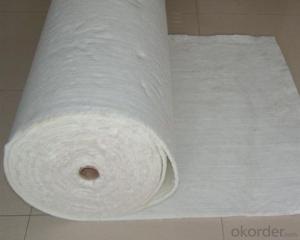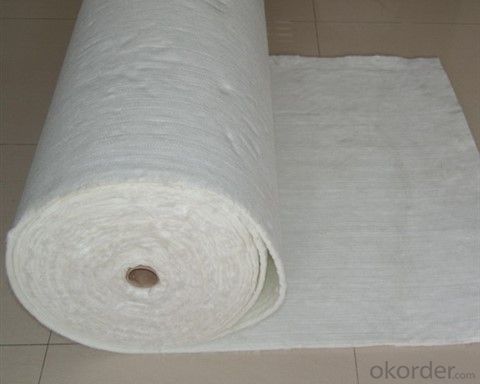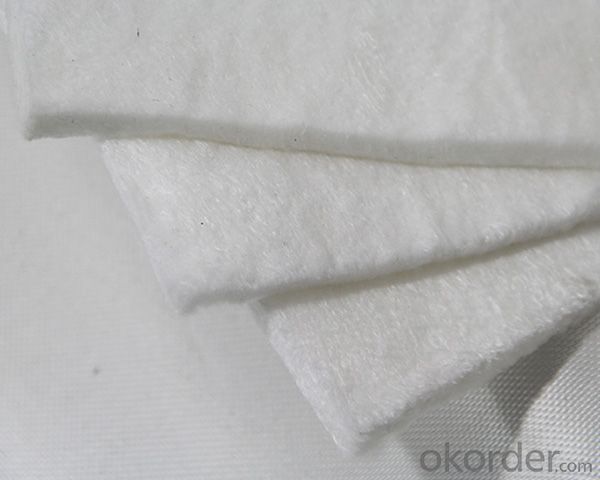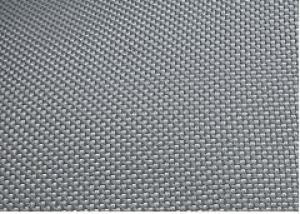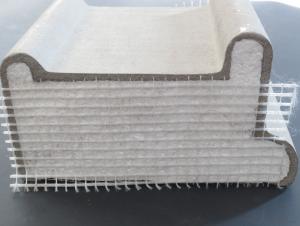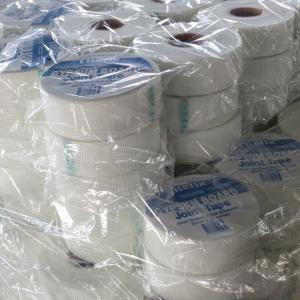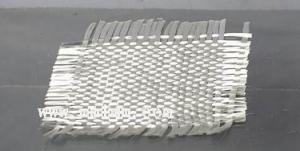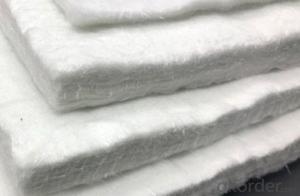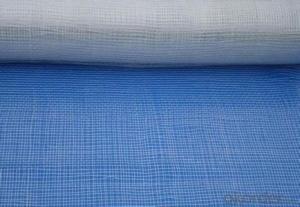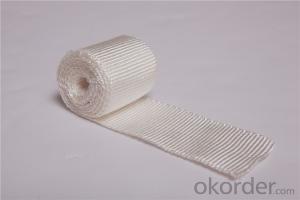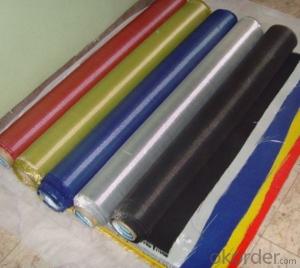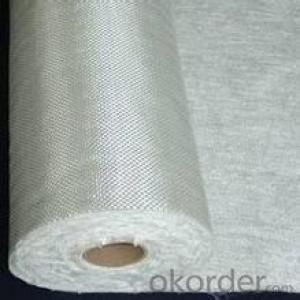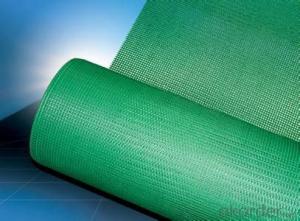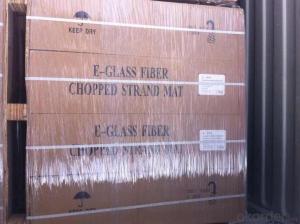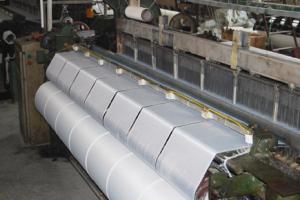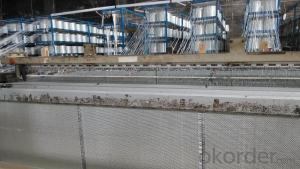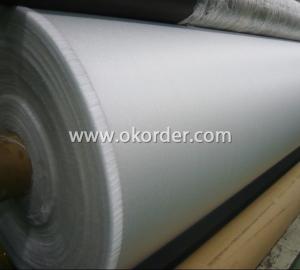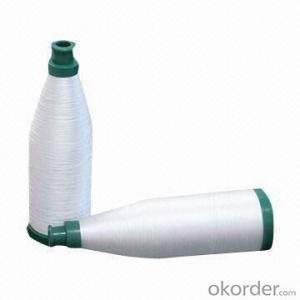High Temperature Insulation Fiberglass Fabrics Silica Fiber Needle Mat
- Loading Port:
- Ningbo
- Payment Terms:
- TT OR LC
- Min Order Qty:
- 500 m²
- Supply Capability:
- 300000 m²/month
OKorder Service Pledge
OKorder Financial Service
You Might Also Like
Description: High silica fiber needle mat is machincally punched by 100% silica fiber strands without any binder. It is suitable for 1100℃ hight temperature insulation.
Features: high temperature, chemical, and abrasion resistance, fire retardant
Application: Fiberglass Mesh Cloth, resistant high temperatures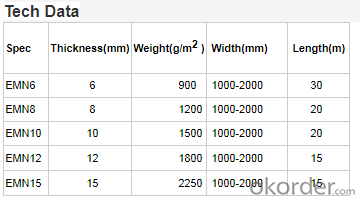
PRICE: USD2 per kilogram
UNIT: Kilogram
MOQ: 100 KGS
Weight: 110-150gsm
Width: 1m,1.2m,1.5m or customized
Yarn Type: E-glass
Standing temperature: 1100℃
Product name: Silica Fiber Needle Mat
Roll length: 50 meter or customized
Color: white
Weave Type:conventional
Alkali content: Alkali free
Processing service: cutting
Material: fiberglass
Thickness: 3-25mm or customized
Size: can be customized
Supply ability: 200000 Kilogram/Kilograms per Month
Packaging: Rolls packed In cartons loaded on pallets or according to customers' requirements.
Lead time: 7-30 days
Technology: nonwoven, laminating and needle-punched
- Q: Can fiberglass fabric be used for insulation in food and beverage facilities?
- Yes, fiberglass fabric can be used for insulation in food and beverage facilities. Fiberglass fabric is known for its excellent thermal insulation properties, making it an ideal choice for insulating areas where temperature control is crucial, such as food and beverage facilities. It can help maintain desired temperatures, prevent heat loss or gain, and ensure energy efficiency in these facilities. Additionally, fiberglass fabric is resistant to moisture, chemicals, and fire, making it suitable for the food and beverage industry where hygiene and safety are paramount. Overall, fiberglass fabric can effectively provide insulation in food and beverage facilities.
- Q: Is fiberglass fabric resistant to birds?
- No, fiberglass fabric is not inherently resistant to birds. While fiberglass is a strong and durable material, it can still be damaged by birds. They may peck at or scratch the surface of the fabric, causing minor to moderate damage. Additionally, birds may build nests using fiberglass fabric if they find it suitable for their needs. However, fiberglass fabric is not a preferred material for birds as it lacks the softness and flexibility they typically seek for nesting. Therefore, while it may not be completely resistant to birds, fiberglass fabric is less likely to be heavily targeted or extensively damaged by them compared to other materials.
- Q: Is fiberglass fabric suitable for making car covers?
- Yes, fiberglass fabric is suitable for making car covers. Fiberglass fabric is a popular choice for car covers because it offers several advantages. Firstly, fiberglass fabric is highly durable and can withstand harsh weather conditions, including rain, snow, and UV rays from the sun. This ensures that the car remains protected and prevents any damage to the paint or interior. Additionally, fiberglass fabric is lightweight and easy to handle, making it convenient for covering and uncovering the car. It is also resistant to mildew and mold, which is crucial for maintaining the car's cleanliness and preventing any unwanted odors. Furthermore, fiberglass fabric is breathable, allowing moisture to escape and preventing the formation of condensation on the car's surface. Overall, fiberglass fabric is a reliable and effective choice for making car covers, providing excellent protection and ensuring the longevity of the vehicle.
- Q: What is the typical width of fiberglass fabrics?
- The typical width of fiberglass fabrics can vary depending on the specific application and manufacturer. However, standard widths for fiberglass fabrics range from 36 to 60 inches (91-152 cm). These widths are commonly used in industries such as aerospace, automotive, construction, and marine. It is important to note that custom widths can also be produced for specific requirements if needed.
- Q: Can fiberglass fabric be used for reinforcement in concrete structures?
- Indeed, fiberglass fabric is capable of being utilized as reinforcement in concrete structures. Commonly referred to as fiberglass mesh, this fabric is crafted from interwoven fiberglass strands and finds frequent use in construction settings. It presents numerous advantages as a reinforcement material for concrete structures. First and foremost, fiberglass fabric exhibits a remarkable tensile strength, enabling it to withstand substantial forces without succumbing to breakage. This durability enhances the longevity and load-bearing capacity of concrete structures. By evenly distributing the load throughout the concrete, it mitigates the risk of cracks and structural failure. Secondly, fiberglass fabric is lightweight and easily manageable. In stark contrast to traditional steel reinforcement, which can be burdensome and time-consuming to install, fiberglass fabric is light and can be effortlessly cut, molded, and applied. Consequently, it serves as a convenient option for reinforcing various components of a concrete structure, including walls, columns, and beams. Additionally, fiberglass fabric is resistant to corrosion and does not rust like steel reinforcement. This corrosion resistance proves particularly advantageous in environments exposed to moisture, chemicals, or other corrosive elements. By employing fiberglass fabric, the probability of degradation and deterioration of the reinforcement over time is significantly diminished. Moreover, fiberglass fabric possesses non-conductive properties, meaning it does not conduct electricity. This characteristic proves beneficial in specific applications, such as structures requiring electrical insulation or settings with electromagnetic interference. Overall, fiberglass fabric manifests as a versatile and efficacious reinforcement material for concrete structures. Its high tensile strength, lightweight nature, corrosion resistance, and non-conductive properties render it a suitable choice for various construction projects. However, it remains imperative to adhere to proper installation guidelines and specifications provided by manufacturers to ensure optimal performance and longevity of the reinforced concrete structure.
- Q: How does fiberglass fabric perform in abrasive environments?
- Fiberglass fabric is known for its exceptional performance in abrasive environments. Its unique composition and construction make it highly resistant to wear and tear caused by abrasion. Firstly, fiberglass fabric is made from fine strands of glass fibers that are woven together to create a strong and durable material. These glass fibers possess excellent resistance to abrasion, making the fabric highly resilient and capable of withstanding the repetitive rubbing or scraping actions often encountered in abrasive environments. Additionally, fiberglass fabric is commonly coated with a protective layer or finish to further enhance its resistance to abrasion. This coating acts as a barrier, preventing the abrasive particles from directly coming into contact with the fabric. As a result, the fabric is able to maintain its integrity and performance over time, even in extremely abrasive conditions. Moreover, fiberglass fabric exhibits low friction properties, which is beneficial in abrasive environments. This low friction characteristic reduces the chances of the fabric being abraded or worn down due to constant rubbing or contact with rough surfaces. It also helps to minimize the generation of heat, which is often associated with abrasion, thereby contributing to the fabric's longevity and performance. Overall, fiberglass fabric is an excellent choice for applications in abrasive environments. Its inherent resistance to abrasion, coupled with protective coatings and low friction properties, ensures that the fabric can withstand the challenges posed by abrasive conditions, providing long-lasting performance and durability.
- Q: Is fiberglass fabric resistant to chemicals used in automotive industry?
- Fiberglass fabric is generally resistant to the chemicals commonly used in the automotive industry. It is well-known for its outstanding ability to withstand a wide range of chemicals, including oils, fuels, solvents, and acids. Because of this, it is a suitable material for various automotive applications, such as insulation, reinforcement, and protective covers. Moreover, fiberglass fabric is also heat-resistant, lightweight, and possesses a high strength-to-weight ratio, making it a preferred choice in the automotive manufacturing field. However, it is crucial to acknowledge that the specific chemical resistance of fiberglass fabric may vary depending on the type and quality of the fabric, as well as the concentration and duration of exposure to the chemicals. Therefore, it is advisable to consult the manufacturer's specifications and testing data to ensure the suitability of fiberglass fabric for a specific chemical application in the automotive industry.
- Q: Can fiberglass fabric be used for making air ducts?
- Air ducts can be made using fiberglass fabric, which is a versatile material commonly found in various industries, including HVAC. This material provides several benefits when used in air duct applications. To begin with, fiberglass fabric is lightweight, making it easier to handle and install compared to alternative materials like sheet metal. This leads to faster and more cost-effective installation processes. Furthermore, fiberglass fabric is non-porous, meaning it resists moisture, mold, and mildew. This is especially important in air ducts as it helps maintain indoor air quality by preventing the growth of harmful bacteria and fungi. In addition, fiberglass fabric offers excellent thermal insulation properties, effectively retaining heat or cold air. This improves energy efficiency by reducing heat transfer and minimizing energy losses. Moreover, fiberglass fabric is known for its fire-resistant properties, making it a safe choice for air duct applications. It has a high melting point and does not emit toxic gases when exposed to fire, ensuring the safety of occupants in case of a fire incident. Lastly, fiberglass fabric is flexible and easily molded and shaped to fit different duct configurations, including bends and turns. This flexibility allows for easy customization and adaptation to various building layouts. Overall, fiberglass fabric is a suitable material for making air ducts due to its lightweight, non-porous, thermal insulation, fire-resistant, and flexible properties. However, it is important to ensure that the fiberglass fabric used for air ducts meets the necessary industry standards and regulations to ensure proper performance and safety.
- Q: What is the weight of fiberglass fabric?
- The weight of fiberglass fabric can vary depending on the specific type and thickness, but generally, it is lightweight and typically ranges from 3 to 10 ounces per square yard.
- Q: What are the different fiberglass fabric weaves for flexibility?
- There are several different fiberglass fabric weaves that offer flexibility, including plain weave, twill weave, satin weave, and leno weave. These weaves provide varying degrees of flexibility and each has its own unique characteristics and uses.
Send your message to us
High Temperature Insulation Fiberglass Fabrics Silica Fiber Needle Mat
- Loading Port:
- Ningbo
- Payment Terms:
- TT OR LC
- Min Order Qty:
- 500 m²
- Supply Capability:
- 300000 m²/month
OKorder Service Pledge
OKorder Financial Service
Similar products
Hot products
Hot Searches
Related keywords
